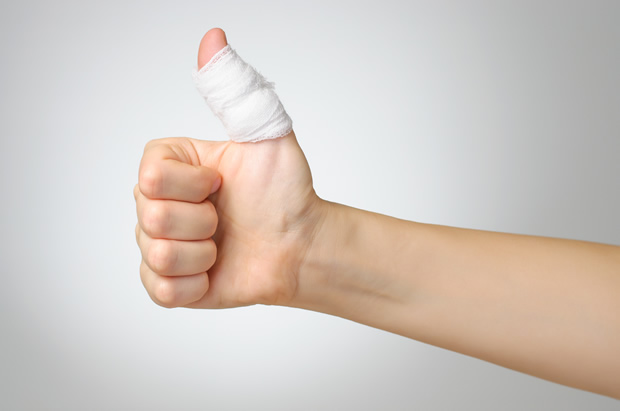Safety: it’s a primary focus for those in the warehouse industry, boosted by the recent SEMA Annual Safety Conference and Exhibition. As it should be, all day, every day. Workplace safety is the foundation for success.
 Small Injuries: Why Make Them a Priority
Small Injuries: Why Make Them a Priority
It’s obvious that every effort should be made to avoid major injuries. What may not be as clear is how important it is to prevent common small injuries. Consider, however, that injuries—no matter how big—result in lowering morale, possible lost days of work, reduced productivity, medical costs, and temporary or permanent hardship.
A focus on preventing common injuries mitigates this everyday worry plaguing worker well-being. This is low-hanging safety fruit as most such injuries are preventable just so long as there is appropriate training, equipment, and awareness.
Let’s look at hand lacerations as an example of a regular but preventable injury.
Cut Lacerations Out of the Work Experience
Lacerations often rank as one of the top injuries sustained in the workplace. Most of those are cuts to the hands and fingers. According to the U.S. Bureau of Labor Statistics, hand injuries, which account for over a million ER visits, are the second most common type of work-related injury.
Hand lacerations range widely in severity: a small nick may require a plaster, while a deeper gash results in a trip to the hospital, stitches, and days of work missed. Worse yet are the cases of permanent damage, which can lead to loss of dexterity and a worker not being able to return to work.
There are the hard costs of insurance premiums and worker compensation, as well as indirect costs like having to hire and train a new employee. According to a study published in the Journal of Bone and Joint Surgery in 2012, hand and wrist injuries are the most expensive types of injuries in the Netherlands.
Whatever the severity of a laceration, workflow is disrupted and employee well-being drops, not only for the injured person but also for those who witness or are otherwise involved in the incident. Upon closer examination, smaller injuries like lacerations don’t look small at all.
Like other common injuries, lacerations are preventable. Proper training and established safety procedures are critical, as is the proper equipment.
The Right Tools for the Job
Lacerations are often caused by cutting tools, which are common in warehouses. By their very nature, most such tools are dangerous because they house razor-sharp blades. The metal blades in almost all cutting tools arrive overly sharp because metal dulls quickly. Blades are at their most dangerous when they are overly sharp and when they’re dull or nicked. Even generic ceramic blades are typically sharpened way beyond what is necessary to make the cut, putting employees at risk.
With metal blades, maintenance is key to safe use. It’s also important to use utmost caution when changing metal blades as this is another time when the risk of injury is high.
Slice safety blades provide an alternative to metal or generic ceramic blades. Slice tools feature the company’s proprietary finger-friendly grind which resists cutting skin. Several warehouse facilities have switched to Slice cutters with resounding success, as exemplified by numerous case studies.
For example, packaging industry leader Intertape Polymer Group (IPG) switched to using the Slice Pen Cutter at its U.S. plant in Danville, Virginia. Storeroom manager John Codispoti was thrilled with the results: “We have gone from weeks in between cut incidents to months, attaining the best safety record in the nearly three-decade history of our plant with 481 accident-free days!” Codispoti also noted that after testing the Slice Pen Cutter, it was determined that employees could use it without wearing the protective gloves that are required when using any other knife.
Slice blades have been shown to stay sharp up to eleven times longer than their metal counterparts. That equates to better value and less blade-changing hassle.
Slice offers a wide range of cutting tools to fit warehouse and office worker needs, from a variety of box cutters, to utility knives, scissors, and more. In addition to featuring a safer blade, Slice tools are ergonomically designed to reduce hand and forearm fatigue. The housing of Slice tools is made of ABS plastic or GFN (glass-filled nylon); both are lightweight and highly durable.
Ready to Rack Up Rewards
If you’re feeling bolstered with greater enthusiasm to increase safety in your workplace, remember to focus on the small, all-too-common injuries. They are often easy to prevent with education and the right tools. Slice tools are a great first step in reducing hand and forearm lacerations. What other simple solutions will make your workers safer, happier, and feeling well cared for?
Contact Slice
The Gatehouse
Gatehouse Way, Aylesbury
Buckinghamshire, HP19 8DB
Tel: 0844 247 9433
uk@sliceproducts.com
https://www.sliceproducts.com




Comments are closed.